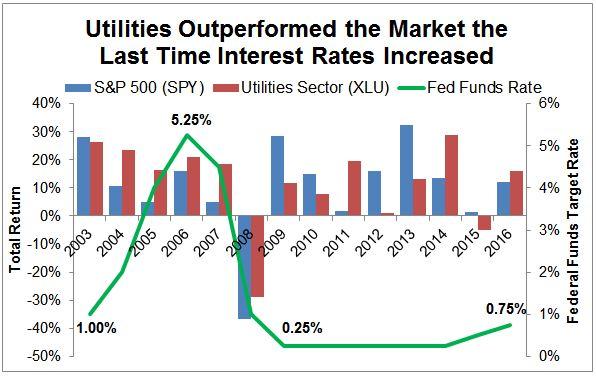Navigate The Private Credit Boom: 5 Key Do's And Don'ts

Table of Contents
Do: Understand Your Risk Tolerance and Investment Goals
Before engaging in private credit, understanding your risk tolerance and investment goals is paramount. Private credit investments often carry higher risk than traditional investments like publicly traded stocks or bonds. A clear understanding of your risk profile will guide your investment decisions and help you avoid potentially disastrous outcomes.
- Define your risk appetite: Are you a conservative investor prioritizing capital preservation, or are you a more aggressive investor comfortable with higher risk for potentially higher returns? Defining your risk appetite (conservative, moderate, or aggressive) is the foundational step.
- Set realistic return expectations: High returns in private credit often come with high risk. Avoid chasing unrealistic yields; focus on achieving returns aligned with your risk profile and investment horizon. Research historical returns of similar private credit investments to establish a benchmark.
- Determine your investment timeline: Are you looking for short-term gains or long-term capital appreciation? Private credit investments often have longer lock-up periods than publicly traded securities, impacting your liquidity and overall strategy.
- Consider diversification across different private credit strategies and asset classes: Diversification is key to mitigating risk. Explore various strategies, including direct lending, private debt funds, and mezzanine financing, to spread your investments across different sectors and geographies.
Don't: Neglect Due Diligence
Thorough due diligence is critical in the private credit market, where information asymmetry is common. Unlike public markets with readily available information, private credit requires independent verification and a deep dive into the borrower's financial health and the investment's structure.
- Independently verify financial statements and projections: Don't solely rely on information provided by the borrower or the intermediary. Engage independent experts to assess the accuracy and reliability of financial data.
- Assess the borrower's creditworthiness and management team's experience: Analyze the borrower's historical financial performance, debt levels, and cash flow. Evaluate the experience and track record of the management team.
- Analyze the underlying collateral and its valuation: If the loan is secured by collateral, thoroughly assess its value and marketability. Obtain independent appraisals to ensure the collateral adequately supports the loan amount.
- Review the loan documentation carefully, paying close attention to covenants and repayment terms: Understand all aspects of the loan agreement, including interest rates, fees, repayment schedules, and default provisions.
- Seek professional advice from experienced private credit advisors: Engaging legal and financial professionals with expertise in private credit is crucial for navigating the complexities of these transactions.
Do: Diversify Your Private Credit Portfolio
Diversification is crucial for mitigating risk in private credit. Concentrating your investments in a single borrower, sector, or strategy significantly increases your exposure to potential losses.
- Invest in various sectors and geographies: Spreading your investments across diverse sectors (e.g., technology, healthcare, real estate) and geographic locations reduces the impact of sector-specific or regional economic downturns.
- Consider different loan structures (e.g., senior secured, subordinated debt, mezzanine financing): Each loan structure carries a different level of risk and return. A balanced portfolio should incorporate a mix of these structures to optimize risk-adjusted returns.
- Spread your investments across multiple borrowers to avoid overexposure to any single entity: Don't put all your eggs in one basket. Diversify your portfolio across multiple borrowers to minimize the impact of any single borrower defaulting.
- Explore different fund managers with varied investment strategies: Different fund managers have varying investment approaches, risk profiles, and due diligence processes. Selecting diverse managers can help to further diversify your portfolio.
Don't: Overlook Liquidity Considerations
Private credit investments are often illiquid, meaning they cannot be easily converted to cash. Understanding liquidity implications is critical before committing capital.
- Understand the expected time horizon for returns and plan accordingly: Private credit investments often have longer lock-up periods and less predictable exit strategies than public market investments.
- Consider your liquidity needs before committing capital: Only allocate capital to private credit that you can comfortably tie up for the expected investment horizon.
- Allocate only a portion of your portfolio to private credit, ensuring sufficient liquidity in other assets: Maintain a diversified portfolio with liquid assets to meet unexpected financial needs.
- Be prepared for potential delays in receiving payments: Delays in receiving payments are a potential risk in private credit. Factor this into your financial planning.
Do: Engage Experienced Professionals
Navigating the private credit market is challenging; professional guidance is invaluable. Engaging experienced professionals can significantly improve your investment outcomes and reduce risks.
- Seek legal counsel specializing in private credit transactions: Legal counsel can help you understand complex loan agreements and protect your interests.
- Work with experienced financial advisors with expertise in private credit investments: Financial advisors can provide valuable insights into market trends, risk assessment, and portfolio construction.
- Consider utilizing fund managers with a proven track record in private credit: Fund managers can provide access to deal flow and professional management of your private credit investments.
- Regularly review your portfolio with your professional advisors to adapt to market changes: The private credit market is dynamic. Regular reviews allow for adjustments to your strategy based on market conditions and your evolving investment goals.
Conclusion
The private credit market presents exciting opportunities for investors, but success hinges on careful navigation. By following these five key do's and don'ts – understanding your risk tolerance, performing thorough due diligence, diversifying your portfolio, considering liquidity, and engaging experienced professionals – you can significantly increase your chances of achieving your investment goals within the dynamic world of private credit. Remember, thorough research and professional guidance are your best allies when navigating the complexities of private credit investment. Start planning your private credit strategy today!

Featured Posts
-
 Mark Zuckerbergs Challenges In The Age Of Trump
Apr 22, 2025
Mark Zuckerbergs Challenges In The Age Of Trump
Apr 22, 2025 -
 Microsoft Activision Deal Ftc Files Appeal
Apr 22, 2025
Microsoft Activision Deal Ftc Files Appeal
Apr 22, 2025 -
 Identifying The Countrys Top New Business Opportunities A Geographic Overview
Apr 22, 2025
Identifying The Countrys Top New Business Opportunities A Geographic Overview
Apr 22, 2025 -
 Higher Stock Prices Higher Risks What Investors Need To Know
Apr 22, 2025
Higher Stock Prices Higher Risks What Investors Need To Know
Apr 22, 2025 -
 How Is A New Pope Chosen A Comprehensive Guide To Papal Conclaves
Apr 22, 2025
How Is A New Pope Chosen A Comprehensive Guide To Papal Conclaves
Apr 22, 2025
